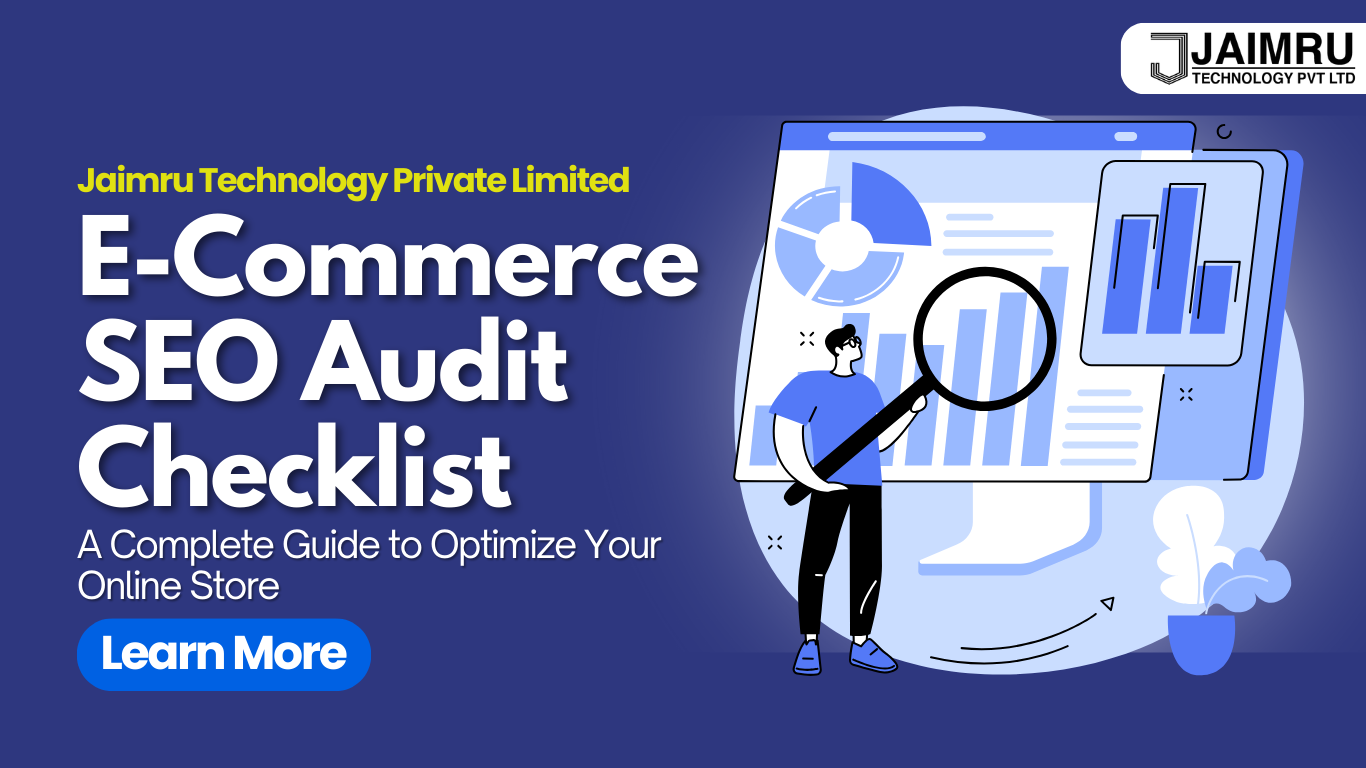
Posted On : 05-05-2025 15:42:00
In an industry with fierce competition and many alternative shopping options online, it’s not enough to create just any type of ecommerce store. If you want to be found on search engines, tap into search engine organic traffic, and convert this traffic, your store must be optimized at the onset. The best way to do this is by conducting an e commerce SEO audit.
A full SEO audit will show you all of the technical issues, on-page issues, and content issues, which may affect your chances of getting found on search engines (Google). This article will present you with a full E-commerce SEO audit checklist to assist you in evaluating your site and SEO objectively to achieve optimized performance.
A strong foundation is essential. Technical SEO ensures search engines can properly crawl, index, and understand your ecommerce website.
Read more: 10 Critical Technical SEO Errors and Solutions
a. Crawlability and Indexing
Use tools like Google Search Console, Screaming Frog, or Ahrefs to crawl your site. Check for blocked pages in `robots.txt` or with `noindex` tags.
Ensure your most important pages (like product and category pages) are indexed.
b. Site Speed
Use Google PageSpeed Insights or GTmetrix to analyze speed.
Compress images, enable browser caching, use a CDN (Content Delivery Network), and minimize JavaScript and CSS.
c. Mobile Friendliness
More than half of ecommerce traffic comes from mobile.
Use Google’s Mobile-Friendly Test to ensure your design is responsive and fast on mobile devices.
d. SSL Certificate
Your site must use HTTPS. It’s a ranking signal and critical for user trust.
e. Fix Broken Links & Redirects
Identify 404 errors and fix or redirect them.
Ensure 301 redirects are in place for moved pages or discontinued products.
Each product, category, and blog page must be optimized for relevant keywords and structured content.
a. Meta Titles and Descriptions
Make sure every page has a unique and descriptive title tag (under 60 characters).
Write compelling meta descriptions (under 160 characters) that encourage clicks.
b. H1 and Heading Tags
Each page should have one H1 tag (usually the product or category name).
Use H2s and H3s to structure content clearly.
c. URL Structure
Use short, keyword-rich, and descriptive URLs.
Example: `yourstore.com/men-running-shoes`
Avoid: `yourstore.com/product?id=123`
d. Product Descriptions
Avoid duplicate content (especially from manufacturers).
Write original, informative, and keyword-optimized descriptions for each product.
e. Alt Text for Images
Every product image should have relevant alt text to boost SEO and accessibility.
Your site needs to rank for what your customers are searching for.
a. Keyword Research
Use tools like Google Keyword Planner, Ahrefs, or Ubersuggest.
Target a mix of short-tail (e.g., “laptop”) and long-tail keywords (e.g., “best laptops under 50000 in India”).
b. Category Pages Optimization
Category pages often hold huge ranking potential. Add introductory text and optimize for broader keywords.
Example: A category page for "Men’s Running Shoes" should include keyword-rich copy.
c. Internal Linking
Link between related products, categories, and blog posts.
Helps distribute page authority and keeps users engaged longer.
Google loves fresh, valuable content. A content plan supports SEO growth and user trust.
a. Blog Integration
Write blogs around your niche, product guides, how-tos, and comparison posts.
Example: “10 Must-Have Kitchen Gadgets in 2025” if you sell home appliances.
b. Buyer Guides and FAQs
Add buying guides and FAQs to product or category pages to target informational keywords.
c. User-Generated Content
Enable product reviews and ratings to boost content richness and social proof.
Good structure improves both SEO and user experience.
a. Logical Site Hierarchy
Keep your site 3 clicks deep max: Homepage > Category > Product
Use breadcrumbs for easy navigation.
b. Sitemap.xml & Robots.txt
Submit your sitemap.xml in Google Search Console.
Make sure robots.txt doesn’t block important sections of your site.
Structured data helps search engines better understand your site and improve how your listings appear.
a. Product Schema
Add markup for product name, price, availability, and reviews to appear in rich snippets.
b. Breadcrumb Schema
Improves click-through rate and shows a clean URL path in search results.
c. FAQ & Review Schema
Helps display answers or reviews directly on the SERP.
Use tools like Google’s Rich Results Test or Schema.org to implement.
Backlinks are a core part of SEO success. You should regularly assess your site's link profile.
a. Check Your Backlinks
Use Ahrefs, SEMrush, or Moz to monitor referring domains and link quality.
b. Disavow Spammy Links
Identify and disavow toxic backlinks that could hurt your rankings.
c. Build Authoritative Links
Create link-worthy content, collaborate with bloggers/influencers, and get featured on niche directories.
Read more: A Step-by-Step Guide to Mastering Link Building
Google now considers how users interact with your website. A good UX boosts dwell time and conversions.
a. Improve Page Layout
Highlight CTAs (Add to Cart, Buy Now) clearly.
Avoid pop-ups that interrupt user experience.
b. Optimize for Core Web Vitals
Focus on LCP (Largest Contentful Paint), FID (First Input Delay), and CLS (Cumulative Layout Shift) for better rankings and smoother UX.
c. Use Heatmaps & Analytics
Tools like Hotjar or Clarity help you understand how users navigate and where they drop off.
SEO drives traffic. CRO turns it into sales.
a. Check Checkout Process
Minimize steps in the checkout process.
Offer guest checkout and multiple payment methods.
b. Use Trust Signals
how security badges, return policies, customer reviews, and fast delivery icons.
SEO isn't a one-off task; it's a continual process. Following this Ecommerce SEO Audit Checklist will not only improve your rankings but will improve the overall experience for customers shopping at your site. You should start with a site-wide audit, fix the high-priority items identified, and create a plan to steadily adopt an Ecommerce SEO growth strategy.
Copyright 20-2025 Jaimru Technology Private Limited | All Rights Reserved.